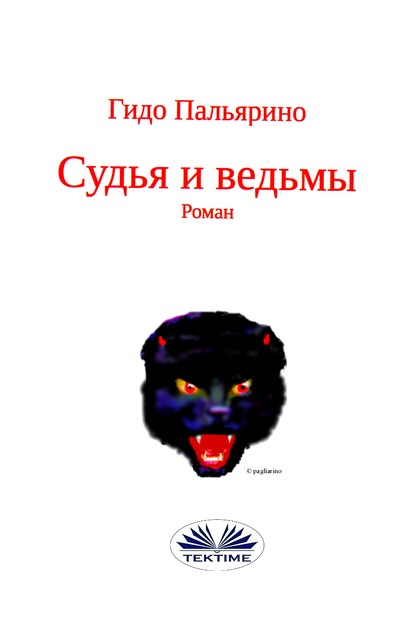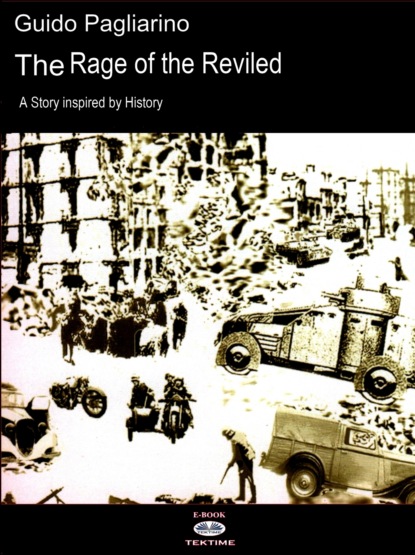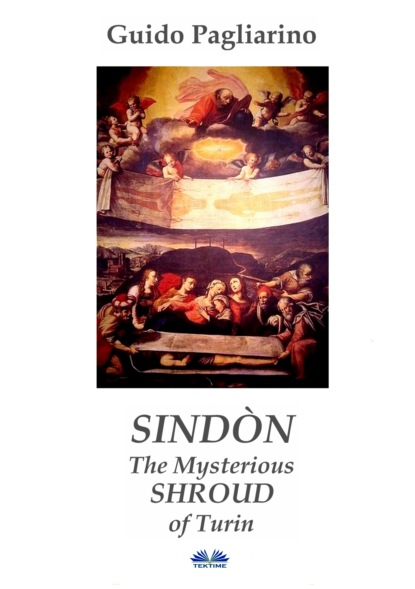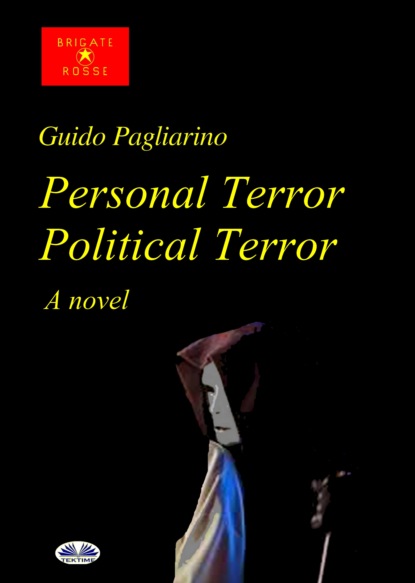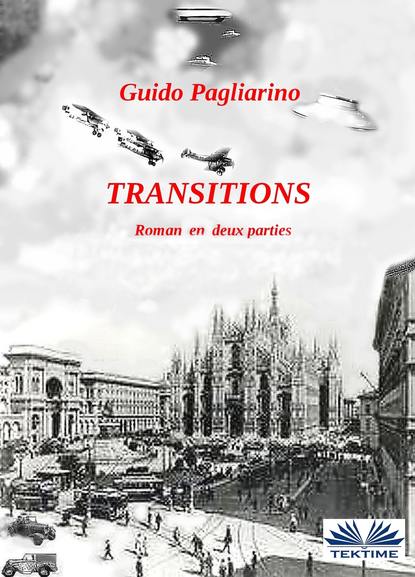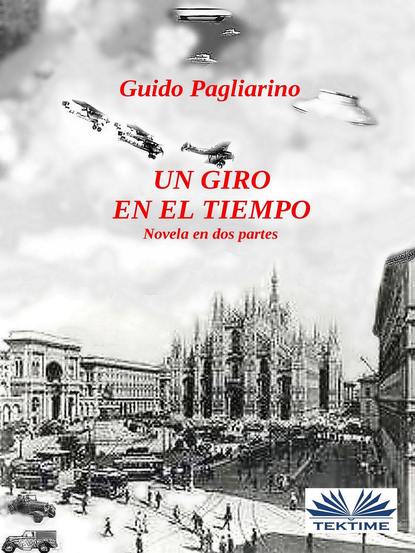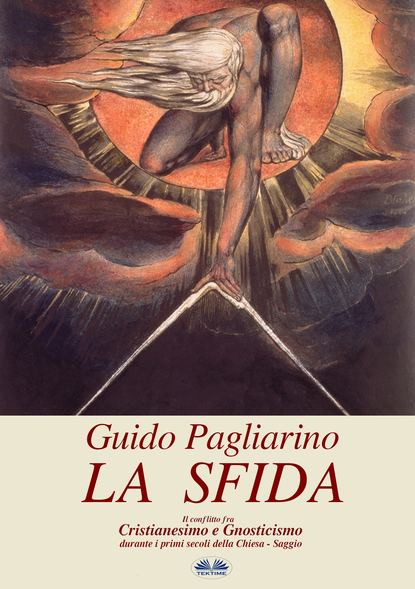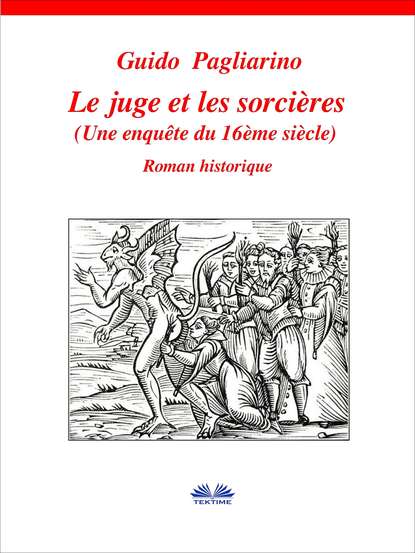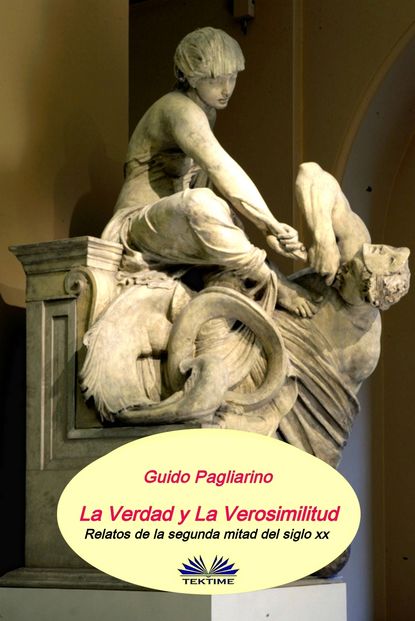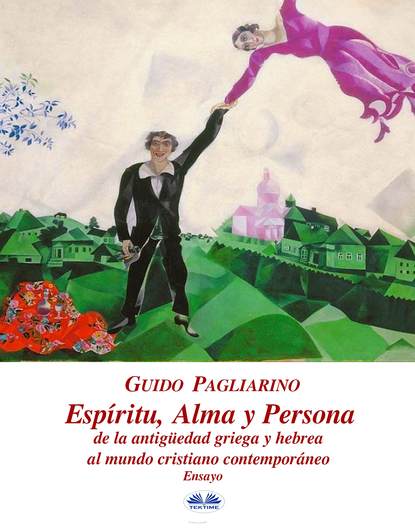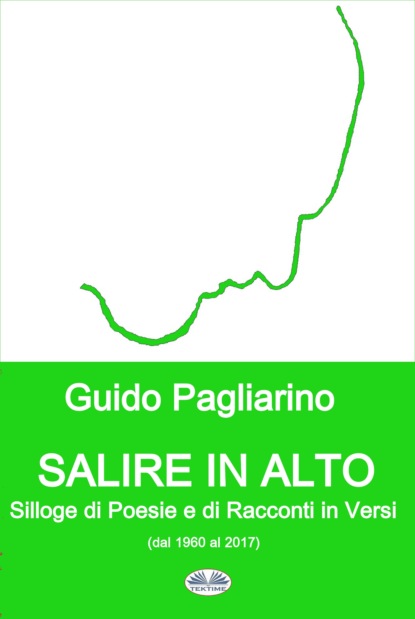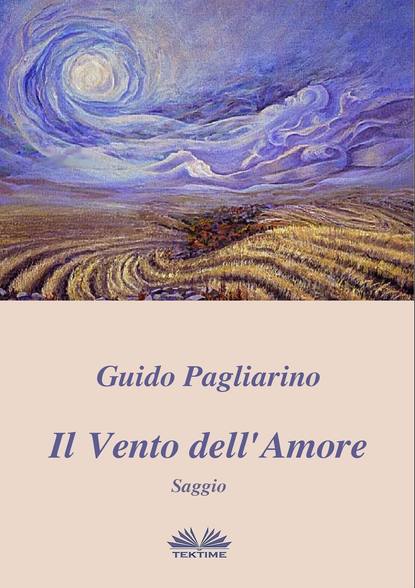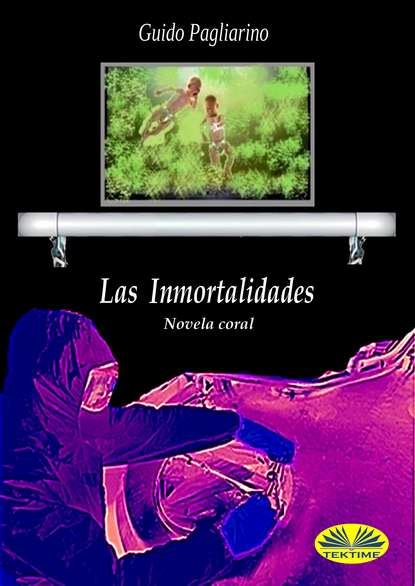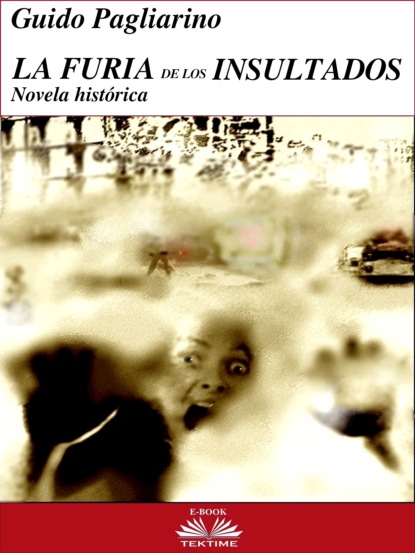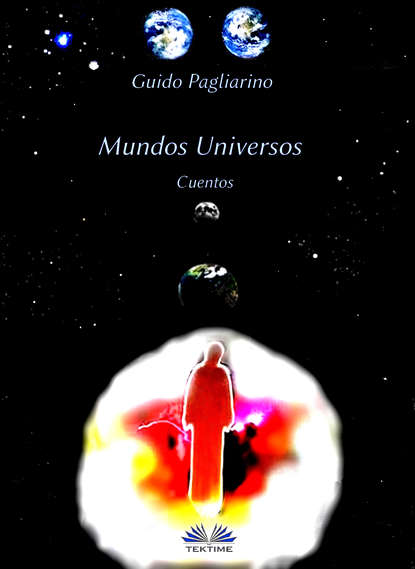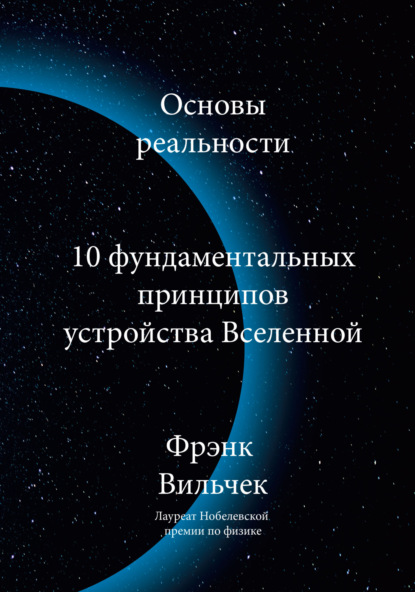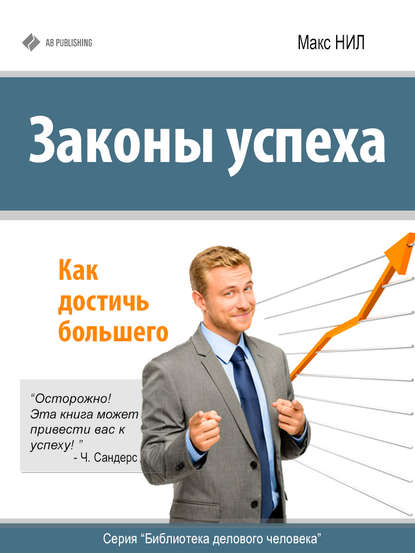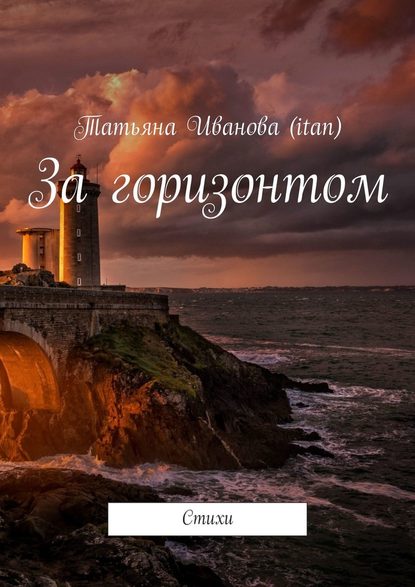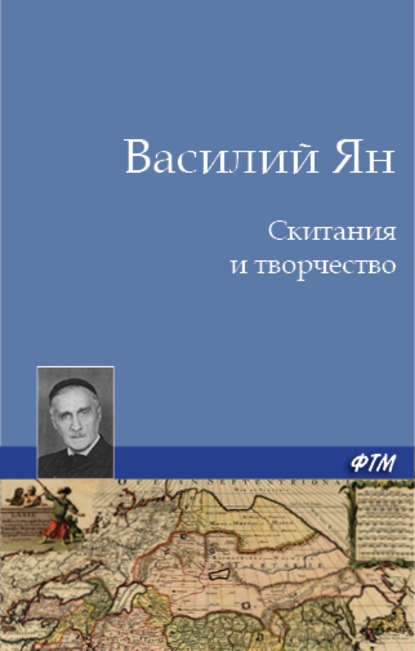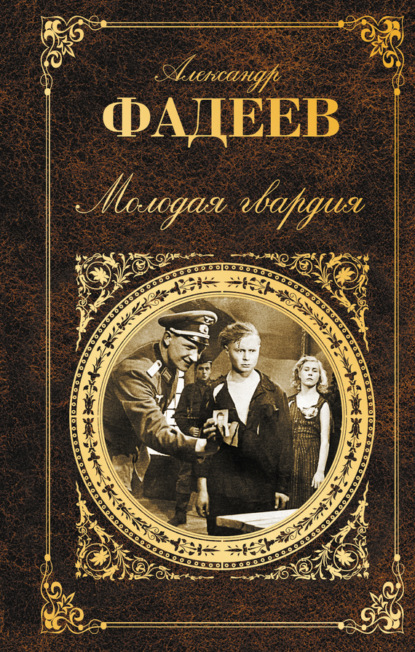Поиск:
Войти
Книги автора: Guido Pagliarino
Сортировка
- по просмотрам
- сначала новые
- по рейтингу
- по просмотрам
- по названию
В году 1530 Паоло Грилланди, папский судья, председатель мирского суда в Риме, ведет дознание об одн…
В году 1530 Паоло Грилланди, папский судья, председатель мирского суда в Риме, ведет дознание об одном туманном убийстве и гнусном похищении; по ходу следствия ему удается пролить свет на грязные делишки некоторых высокопоставленных особ, которые пристрастились к сатанизму, убийствам и самым зверским половым сношениям, и восстановить наконец справедливость, но и сам он порядком обжигается. Грязных негодяев, которые совершили не одно лишь, а целый ряд преступлений, по статьям закона тех времен он приговорит к смерти на костре, но все же долгим, опасным и не лишенным покушений на его жизнь окажется путь, который магистрату придется пройти, чтобы отыскать доказательства по делу. В то же время, благодаря личному опыту и некоторым встречам, происходит его обращение из безжалостного преследователя ведьм в человека, охваченного сомнениями и состраданием. В обстановке охоты на ведьм в эпоху Возрождения читатель, среди прочих эффектных сцен, столкнется с поединком на мечах с самим чертом. В году 1530 Паоло Грилланди, папский судья, председатель мирского суда в Риме, ведет дознание об одном туманном убийстве и гнусном похищении; по ходу следствия ему удается пролить свет на грязные делишки некоторых высокопоставленных особ, которые пристрастились к сатанизму, убийствам и самым зверским половым сношениям, и восстановить наконец справедливость, но и сам он порядком обжигается. Грязных негодяев, которые совершили не одно лишь, а целый ряд преступлений, по статьям закона тех времен он приговорит к смерти на костре, но все же долгим, опасным и не лишенным покушений на его жизнь окажется путь, который магистрату придется пройти, чтобы отыскать доказательства по делу. В то же время происходит его обращение из безжалостного преследователя ведьм в человека, охваченного сомнениями и состраданием, благодаря личному опыту и некоторым встречам, а в первую очередь благодаря молодому, высокообразованному епископу Микели, который в числе немногих священнослужителей в те времена борется с фанатизмом во имя любвеобильного Божьего благоразумия. В обстановке охоты на ведьм в эпоху Возрождения, помимо различных неожиданных поворотов событий вплоть до последних страниц, читатель, среди прочих эффектных сцен сюжета, столкнется с поединком на мечах с самим чертом, разграблением Рима, встретится с философами и магами-гностиками, рабами, разбойниками, святыми и бесноватыми в Италии, где уже близится Тридентский собор, стране, отличной от современной, и все же в какой-то мере похожей. Задействованы в этом романе историческом, но с детективным разворотом, величайшие персонажи вошедшие в большую Историю, а также персонажи менее известные, такие как адвокат Понцинибио, который выступал против жестокостей, применяемых как католической инквизицией, так и в протестантских религиозных судах, и личность которого намного предваряет личности таких противников смертной казни, как Беккария; вошли в роман и такие реальные персонажи, как бесноватый Балестрини, и наводящий ужас инквизитор доминиканец Спина. Да и сам главный герой Грилланди является исторической личностью, хотя на самом деле речь шла о фанатичном адвокате, преследователе ведьм, а не о папском судье. В числе вымышленных персонажей встречаем Мору, юную и покорную любовницу судьи, которая хранит страшные, будоражащие душу тайны, она не второстепенная героиня, поскольку именно она полностью раскрывать магистрату дело. Помимо нее также вымышленными персонажами являются двуличный кавалер Ринальди и приспешник ада князь Бьянкакроче, образ которого остается на втором плане и ни разу не выходит на первый план, как подобает великим кукловодам: это своего рода незримый главарь мафии, который сделал своим замом действующего в открытую Ринальди. Епископ Микели – тоже вымышленный герой, но он вобрал в себя образы высокопоставленных священнослужителей, которые существовали на самом деле: Поул, Садолето и Мороне; инквизиция обвинила их в ереси, так как они проповедовали евангельское милосердие против жестокостей инквизиторов; также вымышленными являются персонажи священника (приходского) из Гроттаферраты, наемного убийцы Тралло, фехтовальщика Фуэнтеса Виллаты, главаря разбойников и брата Мариетты, судьи Салати и лейтенанта Риссони. В романе отражается менталитет XVI века, ведь, как известно историкам, когда мы заглядываем в прошлое, надо как можно тщательнее устранить современное восприятие, иначе есть опасность вынести не исторические суждения; например, смертная казнь сегодня, как правило, считается вещью ужасной, а в XVI веке она воспринималась как наказание бесспорное, и полагали, что раскаявшийся убийца смертью искупает все свои грехи и таким образом возносится в рай; вот почему один из персонажей, епископ Микели, хотя и является он идеалистом, не достигает отрицания смертных приговоров за убийство, более того, он одобряет сожжение на костре, к которому судья Грилланди приговаривает раскрытую и арестованную сатанинскую преступную группу в конце романа.
В году 1530 Паоло Грилланди, папский судья, председатель мирского суда в Риме, ведет дознание об одн…
В году 1530 Паоло Грилланди, папский судья, председатель мирского суда в Риме, ведет дознание об одном туманном убийстве и гнусном похищении; по ходу следствия ему удается пролить свет на грязные делишки некоторых высокопоставленных особ, которые пристрастились к сатанизму, убийствам и самым зверским половым сношениям, и восстановить наконец справедливость, но и сам он порядком обжигается. Грязных негодяев, которые совершили не одно лишь, а целый ряд преступлений, по статьям закона тех времен он приговорит к смерти на костре, но все же долгим, опасным и не лишенным покушений на его жизнь окажется путь, который магистрату придется пройти, чтобы отыскать доказательства по делу. В то же время, благодаря личному опыту и некоторым встречам, происходит его обращение из безжалостного преследователя ведьм в человека, охваченного сомнениями и состраданием. В обстановке охоты на ведьм в эпоху Возрождения читатель, среди прочих эффектных сцен, столкнется с поединком на мечах с самим чертом. В году 1530 Паоло Грилланди, папский судья, председатель мирского суда в Риме, ведет дознание об одном туманном убийстве и гнусном похищении; по ходу следствия ему удается пролить свет на грязные делишки некоторых высокопоставленных особ, которые пристрастились к сатанизму, убийствам и самым зверским половым сношениям, и восстановить наконец справедливость, но и сам он порядком обжигается. Грязных негодяев, которые совершили не одно лишь, а целый ряд преступлений, по статьям закона тех времен он приговорит к смерти на костре, но все же долгим, опасным и не лишенным покушений на его жизнь окажется путь, который магистрату придется пройти, чтобы отыскать доказательства по делу. В то же время происходит его обращение из безжалостного преследователя ведьм в человека, охваченного сомнениями и состраданием, благодаря личному опыту и некоторым встречам, а в первую очередь благодаря молодому, высокообразованному епископу Микели, который в числе немногих священнослужителей в те времена борется с фанатизмом во имя любвеобильного Божьего благоразумия. В обстановке охоты на ведьм в эпоху Возрождения, помимо различных неожиданных поворотов событий вплоть до последних страниц, читатель, среди прочих эффектных сцен сюжета, столкнется с поединком на мечах с самим чертом, разграблением Рима, встретится с философами и магами-гностиками, рабами, разбойниками, святыми и бесноватыми в Италии, где уже близится Тридентский собор, стране, отличной от современной, и все же в какой-то мере похожей. Задействованы в этом романе историческом, но с детективным разворотом, величайшие персонажи вошедшие в большую Историю, а также персонажи менее известные, такие как адвокат Понцинибио, который выступал против жестокостей, применяемых как католической инквизицией, так и в протестантских религиозных судах, и личность которого намного предваряет личности таких противников смертной казни, как Беккария; вошли в роман и такие реальные персонажи, как бесноватый Балестрини, и наводящий ужас инквизитор доминиканец Спина. Да и сам главный герой Грилланди является исторической личностью, хотя на самом деле речь шла о фанатичном адвокате, преследователе ведьм, а не о папском судье. В числе вымышленных персонажей встречаем Мору, юную и покорную любовницу судьи, которая хранит страшные, будоражащие душу тайны, она не второстепенная героиня, поскольку именно она полностью раскрывать магистрату дело. Помимо нее также вымышленными персонажами являются двуличный кавалер Ринальди и приспешник ада князь Бьянкакроче, образ которого остается на втором плане и ни разу не выходит на первый план, как подобает великим кукловодам: это своего рода незримый главарь мафии, который сделал своим замом действующего в открытую Ринальди. Епископ Микели – тоже вымышленный герой, но он вобрал в себя образы высокопоставленных священнослужителей, которые существовали на самом деле: Поул, Садолето и Мороне; инквизиция обвинила их в ереси, так как они проповедовали евангельское милосердие против жестокостей инквизиторов; также вымышленными являются персонажи священника (приходского) из Гроттаферраты, наемного убийцы Тралло, фехтовальщика Фуэнтеса Виллаты, главаря разбойников и брата Мариетты, судьи Салати и лейтенанта Риссони. В романе отражается менталитет XVI века, ведь, как известно историкам, когда мы заглядываем в прошлое, надо как можно тщательнее устранить современное восприятие, иначе есть опасность вынести не исторические суждения; например, смертная казнь сегодня, как правило, считается вещью ужасной, а в XVI веке она воспринималась как наказание бесспорное, и полагали, что раскаявшийся убийца смертью искупает все свои грехи и таким образом возносится в рай; вот почему один из персонажей, епископ Микели, хотя и является он идеалистом, не достигает отрицания смертных приговоров за убийство, более того, он одобряет сожжение на костре, к которому судья Грилланди приговаривает раскрытую и арестованную сатанинскую преступную группу в конце романа.
September 26, 1943. Naples is on the verge of rebelling against the occupying Germans. Rosa, a prost…
September 26, 1943. Naples is on the verge of rebelling against the occupying Germans. Rosa, a prostitute and black marketer, a confidant of the Fascist political police, is killed violently. Her alleged murderer, Gennaro, is detained and questioned in vain by a still inexperienced deputy commissioner, Vittorio. Shortly after, the insurrection that will go down in history as The Four Days of Naples erupts. The deputy commissioner and Rosa’s alleged murderer, strangely set free by the commissioner himself, join in. Young Mariapia who has been gang raped by the German side, also takes part in the fight, yearning for revenge. Gennaro soon turns out to be related to her. Another murder takes place, and this time the target is a tobacconist who is also related to Mariapia.
Historical social fresco with crime elements set in Naples mainly in 1943, during those Four Days in which the city, by itself, got rid of the Nazi occupier. There is an abstract actor, indeed the protagonist, alongside the real-life characters, fury, both the collective wrath that erupts on the field of battle and has as its corollary, on the victorious side, rapes and other bestiality, and the anger that is expressed in the rebellion against personal abuses that go unpunished by the authority and are now unbearable.
If an oppressed people can rebel in its own right and rise up and if, as even St Thomas Aquinas admitted, murder of the tyrant is permitted when there is no other way to regain the freedom that God himself has granted the human being, is it lawful or not to kill a criminal that justice cannot reach and strike, who continues to vex, exploit and kill others inside his own neighborhood? Is someone with no other possible defense, and who resorts to extreme defense guilty? And, if so, to what extent? This is the private dilemma that runs through the novel as it traverses the public story of Naples’ rebellion against the Germans.
The scene opens on the violent death of Rosa, a wealthy prostitute and black marketer, a former confidant of the Fascist political police. Gennaro, her alleged murderer, is detained and questioned in vain by a still inexperienced deputy commissioner, Vittorio D'Aiazzo. Very soon after, on September 26, 1943, the insurrection that will go down in history as The Four Days of Naples flares up. The deputy commissioner himself and, strangely, having been freed by the chief commissioner himself, Rosa’s alleged murderer, also join it. Another participant in the battle is the young Mariapia who, having been gang raped by the Germans, yearns for revenge. At some point during the story, Gennaro turns out to be related to her.
During the clashes another murder takes place which, at least apparently, like the death of the prostitute, is not related to the revolt. The victim is a tobacconist, Mariapia's cousin, slaughtered by someone while he was defecating, and who then cut off his testicles. At a certain point the two deaths seem to be connected, because the deceased were not only both linked to the Camorra, but also to the office of American military secret services, the O.S.S. Several characters enter the scene between the various battles, such as young Mariapia’s parents, her paratrooper brother already reported missing in El Alamein but who reappears alive and very active, the willing anatomopathologist Palombella, the fat and phlegmatic warrant officer Branduardi, the valiant deputy commissioner Bollati and, a secondary but fundamental character, the elderly bike repairman Gennarino Appalle, who discovers the tobacconist’s corpse and, at the end of a clash between insurgents and German SS in the street in front of his shop, goes out onto the road and, breathless, alerts deputy commissioner D'Aiazzo who took part in the clash together with his adjutant, the impetuous Brigadier Bordin. The tobacconist had been a foul person, once a batterer for the Camorra, and
Translator: Barbara Maher
This essay divulges what the research has established about the famous Shroud of Turin, and it is no…
This essay divulges what the research has established about the famous Shroud of Turin, and it is not intended to persuade to believe that the Cloth of Turin really wrapped the body of Christ a couple of thousands year ago.
The author returns several times to certain subjects, according to different perspectives: the reader does not consider such reiterations as not necessary and involuntary: the work includes a general introductory part – at some point, considering it useful, already with in-depth studies, as for the medical conclusions of the anatomopathologist Pierluigi Baima Bollone – and a section, divided into chapters, specifically dealing with particular topics already covered in the first part, for example the photographs of the Shroud, and a chronology.
This essay has been updated several times by the author.
The essay is not intended to persuade to believe that the Sheet of Turin has really wrapped the body of Christ a couple of thousand years ago or, as commonly said, that it is authentic-
On the other hand, authenticity can also mean something else, you can say the Shroud preserved in Turin is the Cloth that wrapped body of Christ, but it could be different than simply assume that an item is two thousand years old; and if I do not take a position on the fact that this famous Sheet wrapped Jesus, I suppose that the reasons for thinking that the Shroud is very ancient are prevailing, as there are currently lots of evidence to support it and only two against, of which only one seems objectively to be considered: the radiodating tests on Shroud samples which determined the age of the Sheet at lower medieval period; but they are increasingly disputed by Christian experts, scientifically and not only. The other reason against the Shroud is a prejudice, that comes both from anticlerical laity
and from the majority of the Christians Reformed, preclusion that leads the first to ignore the theme, and sometime to mock it; and leads the Protestant believers to condemn the veneration of the Shroud, which they consider to be a mere ”symbol” created by human hands: they follow the Old Testament condemnation of ”make for yourself images”, historically born for anti-idolatrous reasons, although Catholics argue that the prohibition existed only before God was incarnated in Jesus, showing himself to the world as ”image”, that is as carnal human figure, without any possibility to be confused with graven images; there are, moreover, Catholics who deny authenticity, in the sense that the Shroud isn't precisely the one that wrapped Jesus , and you can find Protestants which assume it is authentic, at least in the second sense of the term or even in the first. In any case, it should be stressed that the Christian faith is not based on the Shroud of Turin but, historically, on the oral witness of the Apostles on Christ’s resurrection, gathered within the first century in the books of the New Testament and come down to us because it was preserved by the Church over the centuries, with systematic control of matching between the new copies and the previous ones, starting with the oldest.
With this spirit comes the second edition of the essay of Guido Pagliarino on the Shroud, , carried out considering new data and correcting a couple of inaccuracies in the book released years ago
The author returns several times to certain subjects, according to different perspectives: the reader does not consider such reiterations as not necessary and involuntary: the work includes a general introductory part – at some point, considering it useful, already with in-depth studies, as for the medical conclusions of the anatomopathologist Pierluigi Baima Bollone – and a section, divided into chapters, specifically dealing with particular topics already covered in the first part, for example the photographs of the Shroud, and a chronology.
In the year 2000 the elderly emeritus police commissioner D'Aiazzo, is working alongside Commissione…
In the year 2000 the elderly emeritus police commissioner D'Aiazzo, is working alongside Commissioner Sordi, his former employee, as a consultant at the Police Headquarters in Turin. He is investigating a series of murders that seem to be the anarchic work of a sadistic serial killer or people sacrifices to the devil of one of the sulfurous sects in the macabre-obsessed Turin. But it could also or only have elements related to the brand of terrorism that had raged in Italy until about twenty years beforehand and still drags on into the end of the millennium. The monster suppresses his victims in a horrendous way, pushing the murder weapon into an ear until it reaches the brain and kills them. The investigation unfolds through disturbing suspicions, identity crises, psychological annotations, and reaches its conclusive acme in the unsettling final revelation, which has the death of the police commissioner himself, as the very consequence of his discovery of the culprit as its addendum.
In the year 2000 the elderly police commissioner emeritus Vittorio D'Aiazzo is working alongside commissioner Sordi, his former employee, as a consultant to the Turin Police Headquarters. They are investigating a series of murders that appear to be the anarchic work of a sadistic serial killer or
sacrifices to the devil by one of the sulfurous sects of macabre-obsessed Turin. But they may also, or only, have roots related to the terrorism that had raged in Italy until twenty years earlier and is still dragging on at the end of the millennium. The monster suppresses his victims horrendously by sticking the murder weapon into an ear until it reaches the brain, with lethal results. The investigation touches on private issues and moves forward through a motley group of humanity that is not entirely morally transparent. But it also touches on the political, economic, and social themes typical of the 1970s during the so-called anni di piombo (years of terrorism), when political and private violence normally ended up being mixed with the disappearance, or almost, of the concept of the person and the prevalence of social roles. Vittorio D'Aiazzo's investigation winds its way through the evil fruits of those perverse seeds, amid disturbing conjectures, identity crises, psychological annotations, and reaches its crucial acme in the unsettling final revelation which has as an addendum the death of the commissioner himself, resulting from the discovery of the culprit.
This essay divulges what the research has established about the famous Shroud of Turin, and it is no…
This essay divulges what the research has established about the famous Shroud of Turin, and it is not intended to persuade to believe that the Cloth of Turin really wrapped the body of Christ a couple of thousands year ago.
The author returns several times to certain subjects, according to different perspectives: the reader does not consider such reiterations as not necessary and involuntary: the work includes a general introductory part – at some point, considering it useful, already with in-depth studies, as for the medical conclusions of the anatomopathologist Pierluigi Baima Bollone – and a section, divided into chapters, specifically dealing with particular topics already covered in the first part, for example the photographs of the Shroud, and a chronology.
This essay has been updated several times by the author.
The essay is not intended to persuade to believe that the Sheet of Turin has really wrapped the body of Christ a couple of thousand years ago or, as commonly said, that it is authentic-
On the other hand, authenticity can also mean something else, you can say the Shroud preserved in Turin is the Cloth that wrapped body of Christ, but it could be different than simply assume that an item is two thousand years old; and if I do not take a position on the fact that this famous Sheet wrapped Jesus, I suppose that the reasons for thinking that the Shroud is very ancient are prevailing, as there are currently lots of evidence to support it and only two against, of which only one seems objectively to be considered: the radiodating tests on Shroud samples which determined the age of the Sheet at lower medieval period; but they are increasingly disputed by Christian experts, scientifically and not only. The other reason against the Shroud is a prejudice, that comes both from anticlerical laity
and from the majority of the Christians Reformed, preclusion that leads the first to ignore the theme, and sometime to mock it; and leads the Protestant believers to condemn the veneration of the Shroud, which they consider to be a mere ”symbol” created by human hands: they follow the Old Testament condemnation of ”make for yourself images”, historically born for anti-idolatrous reasons, although Catholics argue that the prohibition existed only before God was incarnated in Jesus, showing himself to the world as ”image”, that is as carnal human figure, without any possibility to be confused with graven images; there are, moreover, Catholics who deny authenticity, in the sense that the Shroud isn't precisely the one that wrapped Jesus , and you can find Protestants which assume it is authentic, at least in the second sense of the term or even in the first. In any case, it should be stressed that the Christian faith is not based on the Shroud of Turin but, historically, on the oral witness of the Apostles on Christ’s resurrection, gathered within the first century in the books of the New Testament and come down to us because it was preserved by the Church over the centuries, with systematic control of matching between the new copies and the previous ones, starting with the oldest.
With this spirit comes the second edition of the essay of Guido Pagliarino on the Shroud, , carried out considering new data and correcting a couple of inaccuracies in the book released years ago
The author returns several times to certain subjects, according to different perspectives: the reader does not consider such reiterations as not necessary and involuntary: the work includes a general introductory part – at some point, considering it useful, already with in-depth studies, as for the medical conclusions of the anatomopathologist Pierluigi Baima Bollone – and a section, divided into chapters, specifically dealing with particular topics already covered in the first part, for example the photographs of the Shroud, and a chronology.
September 26, 1943. Naples is on the verge of rebelling against the occupying Germans. Rosa, a prost…
September 26, 1943. Naples is on the verge of rebelling against the occupying Germans. Rosa, a prostitute and black marketer, a confidant of the Fascist political police, is killed violently. Her alleged murderer, Gennaro, is detained and questioned in vain by a still inexperienced deputy commissioner, Vittorio. Shortly after, the insurrection that will go down in history as The Four Days of Naples erupts. The deputy commissioner and Rosa’s alleged murderer, strangely set free by the commissioner himself, join in. Young Mariapia who has been gang raped by the German side, also takes part in the fight, yearning for revenge. Gennaro soon turns out to be related to her. Another murder takes place, and this time the target is a tobacconist who is also related to Mariapia.
Historical social fresco with crime elements set in Naples mainly in 1943, during those Four Days in which the city, by itself, got rid of the Nazi occupier. There is an abstract actor, indeed the protagonist, alongside the real-life characters, fury, both the collective wrath that erupts on the field of battle and has as its corollary, on the victorious side, rapes and other bestiality, and the anger that is expressed in the rebellion against personal abuses that go unpunished by the authority and are now unbearable.
If an oppressed people can rebel in its own right and rise up and if, as even St Thomas Aquinas admitted, murder of the tyrant is permitted when there is no other way to regain the freedom that God himself has granted the human being, is it lawful or not to kill a criminal that justice cannot reach and strike, who continues to vex, exploit and kill others inside his own neighborhood? Is someone with no other possible defense, and who resorts to extreme defense guilty? And, if so, to what extent? This is the private dilemma that runs through the novel as it traverses the public story of Naples’ rebellion against the Germans.
The scene opens on the violent death of Rosa, a wealthy prostitute and black marketer, a former confidant of the Fascist political police. Gennaro, her alleged murderer, is detained and questioned in vain by a still inexperienced deputy commissioner, Vittorio D'Aiazzo. Very soon after, on September 26, 1943, the insurrection that will go down in history as The Four Days of Naples flares up. The deputy commissioner himself and, strangely, having been freed by the chief commissioner himself, Rosa’s alleged murderer, also join it. Another participant in the battle is the young Mariapia who, having been gang raped by the Germans, yearns for revenge. At some point during the story, Gennaro turns out to be related to her.
During the clashes another murder takes place which, at least apparently, like the death of the prostitute, is not related to the revolt. The victim is a tobacconist, Mariapia's cousin, slaughtered by someone while he was defecating, and who then cut off his testicles. At a certain point the two deaths seem to be connected, because the deceased were not only both linked to the Camorra, but also to the office of American military secret services, the O.S.S. Several characters enter the scene between the various battles, such as young Mariapia’s parents, her paratrooper brother already reported missing in El Alamein but who reappears alive and very active, the willing anatomopathologist Palombella, the fat and phlegmatic warrant officer Branduardi, the valiant deputy commissioner Bollati and, a secondary but fundamental character, the elderly bike repairman Gennarino Appalle, who discovers the tobacconist’s corpse and, at the end of a clash between insurgents and German SS in the street in front of his shop, goes out onto the road and, breathless, alerts deputy commissioner D'Aiazzo who took part in the clash together with his adjutant, the impetuous Brigadier Bordin. The tobacconist had been a foul person, once a batterer for the Camorra, and
Translator: Barbara Maher
In the year 2000 the elderly emeritus police commissioner D'Aiazzo, is working alongside Commissione…
In the year 2000 the elderly emeritus police commissioner D'Aiazzo, is working alongside Commissioner Sordi, his former employee, as a consultant at the Police Headquarters in Turin. He is investigating a series of murders that seem to be the anarchic work of a sadistic serial killer or people sacrifices to the devil of one of the sulfurous sects in the macabre-obsessed Turin. But it could also or only have elements related to the brand of terrorism that had raged in Italy until about twenty years beforehand and still drags on into the end of the millennium. The monster suppresses his victims in a horrendous way, pushing the murder weapon into an ear until it reaches the brain and kills them. The investigation unfolds through disturbing suspicions, identity crises, psychological annotations, and reaches its conclusive acme in the unsettling final revelation, which has the death of the police commissioner himself, as the very consequence of his discovery of the culprit as its addendum.
In the year 2000 the elderly police commissioner emeritus Vittorio D'Aiazzo is working alongside commissioner Sordi, his former employee, as a consultant to the Turin Police Headquarters. They are investigating a series of murders that appear to be the anarchic work of a sadistic serial killer or
sacrifices to the devil by one of the sulfurous sects of macabre-obsessed Turin. But they may also, or only, have roots related to the terrorism that had raged in Italy until twenty years earlier and is still dragging on at the end of the millennium. The monster suppresses his victims horrendously by sticking the murder weapon into an ear until it reaches the brain, with lethal results. The investigation touches on private issues and moves forward through a motley group of humanity that is not entirely morally transparent. But it also touches on the political, economic, and social themes typical of the 1970s during the so-called anni di piombo (years of terrorism), when political and private violence normally ended up being mixed with the disappearance, or almost, of the concept of the person and the prevalence of social roles. Vittorio D'Aiazzo's investigation winds its way through the evil fruits of those perverse seeds, amid disturbing conjectures, identity crises, psychological annotations, and reaches its crucial acme in the unsettling final revelation which has as an addendum the death of the commissioner himself, resulting from the discovery of the culprit.
Dans l’année 1933 en Italie, un disque volant qui s’est précipité sur le sol vient d’être capturé. À…
Dans l’année 1933 en Italie, un disque volant qui s’est précipité sur le sol vient d’être capturé. À bord, trois cadavres humains. Pour Marconi ce sont des martiens, mais il ne sait pas que les commandes du disque ont des écritures en anglais ; en effet pour Mussolini il s’agit d’un produit d’ingénierie aéronautique militaire anglais. C’est seulement le début d’une affaire dramatique qui se développera sur les autres planètes et sur la Terre du futur.
L’action est divisée en deux parties.
La première s’ouvre sur l’année 1933 en Italie, un disque volant qui s’est précipité sur le sol vient d’être capturé. À bord, trois cadavres humains. Pour Marconi ce sont des martiens, mais il ne sait pas que les commandes du disque ont des écritures en anglais ; en effet pour Mussolini il s’agit d’un produit d’ingénierie aéronautique militaire anglais. Le disque se révèle tout de suite au lecteur comme une navette de débarquement de la chrono-astronéf 9 qui, depuis l’année 2133, est retournée en 1933, et explose pour une panne En étant à quelque mois du pouvoir d’Hitler en Allemagne, une compagnie de parachutisme germanique, en tuant rapidement toutes les milices fascistes chargées de surveillance du disque, vole les parties portables et aussi les missiles que le vélivole du futur a en dotation, dont lequel deux puissantes bombes. Grâce à des études de retro ingénierie, les nazistes produisent des armes et des vélivoles qui les porteront en 1939 à conquérir le monde; et il se passe que….
C’est seulement le début d’une affaire dramatique qui se développera sur les autres planètes et sur la Terre du futur.
Dans la seconde partie, les chrono-astronautes et les scientifiques de la chrono-astronéf 22 décident de changer le sort du planet Tinan en évitant la guerre d’anéantissement qui avait éliminé ses habitants, et il se passe que….
Le mal auquel la cause métaphysique reste incompréhensible est peut-être plus éminent aux « personnages” de ce roman, où le lecteur rencontre aussi „ le péché originel “.
Le roman dans sa première édition, en papier, électronique et en livre audio édité par 0111 éditions en 2011 (hors catalogue depuis le 31-12-13- © Guido Pagliarino depuis 2014), il se classifica premier au prix « Creativa » VI édition, 2012, section narrative éditée.
En el año 1933, se captura en Italia un platillo volante que ha caído a tierra. A bordo hay tres cad…
En el año 1933, se captura en Italia un platillo volante que ha caído a tierra. A bordo hay tres cadáveres humanos. Para Marconi son marcianos, pero no sabe que los manuales del disco se han escrito en inglés; en cambio, para Mussolini, se trata de un producto de la ingeniería militar británica. Es solo el inicio de unos acontecimientos dramáticos que se desarrollarán en otros planetas y en la Tierra del futuro.
Esta novela, en su primera edición, quedó ganadora del Premio Creativa VI edición, 2012, en la categoría de narrativa impresa. La acción se divide en dos partes. La primera se inicia en el año 1933. Se captura en Italia un platillo volante que ha caído a tierra. A bordo hay tres cadáveres humanos. Para Marconi son marcianos, pero no sabe que los manuales del disco se han escrito en inglés; en cambio, para Mussolini, se trata de un producto de la ingeniería militar británica. Es solo el inicio de unos acontecimientos dramáticos que se desarrollarán en otros planetas y en la Tierra del futuro. En el año 2113 ha partido la cronoastronave 22 que lleva una expedición científica al planeta Tinno, que orbita en torno a Beta Centauri, donde una guerra de aniquilación entre dos estados, regidos por dictaduras similares respectivamente a la estalinista y nazifascista terrestres, ha causado el fin de la civilización tinniana; el objetivo de los equipos es recoger vestigios de esta. Mussolini crea un grupo de investigación esperando que Italia llegue a producir, “como la Gran Bretaña”, aeronaves similares al disco. Llevando Hitler unos pocos meses en el poder en Alemania, una compañía de paracaidistas alemanes, matando despiadadamente a todos los milicianos fascistas que custodiaban el disco, roba las partes transportables y los misiles que porta la aeronave del futuro, que incluyen dos potentes bombas disgregadoras. Gracias a estudios de ingeniería inversa, los nazis fabrican armas y vehículos que les llevarán en 1939 a conquistar el mundo…
En la segunda parte, los cronoastronautas y científicos de la nave 22 deciden cambiar la suerte de Tinno evitándoles la guerra de aniquilación que había acabado con sus habitantes. La cronoastronave llega por tanto al pasado de ese planeta en el cual las dos dictaduras enemigas están por el momento en una especie de “guerra fría”. Con varias iniciativas que hacen que a los tinnianos les parezcan intervenciones sobrenaturales, los protagonistas y algunos aliados autóctonos tratan de salvar ese mundo evitando una guerra de verdad, de derrocar las dictaduras y de educar a Tinno en la ética personalista y la democracia. Meses después, dejando el mando a sus amigos alienígenas, los cronoastronautas, se despiden y saltan al futuro del planeta para comprobar los resultados de su acción benéfica a largo plazoy…
El mal, cuya cusa metafísica resulta incomprensible, tal vez sea el más importante de los “personajes” de esta novela coral en la cual el lector también encuentra el “pecado original”.
Nessuno, prima o poi, non s’è posto drammaticamente il doppio quesito: “Perché c’è il male? Si può a…
Nessuno, prima o poi, non s’è posto drammaticamente il doppio quesito: “Perché c’è il male? Si può alla fine esserne liberati, almeno dopo la morte?” Le risposte sono state religiose o filosofiche; tra le seconde è spiccata la concezione di Platone, idea basilare su cui, mescolando ad altro, successivi pensatori antichi, gli gnostici, individui assolutamente elitari, hanno elucubrato la loro teoria della Salvezza, riguardante essi soli e nessun altro. Curiosi delle novità, si sono interessati quasi subito al neonato cristianesimo e molti, ma alla loro maniera snobistica, si sono cristianizzati. Da quel tempo sono iniziate diatribe fra gnostici cristianeggianti e cristiani doc, diverbi acerrimi nei primi secoli dell’era cristiana.
Nessuno, prima o poi, non s’è posto drammaticamente il doppio quesito: “Perché c’è il male? Si può alla fine esserne liberati, almeno dopo la morte?” Le risposte possono essere religiose, e lungo la Storia troviamo l’induismo, il buddismo, il mazdeismo, il giudaismo…; oppure possono essere filosofiche; tra queste spicca la concezione di Platone secondo la quale, com’è noto, la materia, eterna e non creata da Dio, è stata modellata malamente nelle sue forme e leggi fisiche da un artefice e legislatore divino, un bel tipo d’incosciente arruffone chiamato il Demiurgo, cioè l’Artigiano; e gli animi umani, preesistenti, sono stati infelicemente imprigionati nei corpi; bisogna filosofare per migliorarsi, reincarnandosi in conseguenza in persone sempre migliori, fino alla cessazione delle incarnazioni e a essere di nuovo, una volta per tutte, spirituali. Su tal idea basilare, successivi pensatori, riuniti in vari gruppi e gruppuscoli, persone di spirito assolutamente elitario, ritengono che soltanto alcuni individui, essi stessi per l’appunto, siano spirituali, mentre la maggior parte degli altri, no; esclusivamente per il loro bene è venuto sulla terra un salvatore-rivelatore della vera sapienza divina e grazie a lui essi non si annichiliscono morendo ma si possono salvare dalla materia e quindi dal dolore sopravvivendo eternamente felici: solo loro, gli pneumatici o spirituali che hanno in sé l’eterno pneuma o scintilla divina; non tutti gli altri, che sono mortali perché posseggono solo il corpo e l’anima – o psiche – le quali periscono. Pure la pensano elitariamente certi ebrei non ortodossi che, peraltro, su alcune cose secondarie la vedono diversamente. Gli uni e gli altri sono definiti gnostici dagli studiosi moderni, mentr’essi si definivano, semplicemente, pneumatici. Diversamente dagli gnostici, per la maggior parte dei pensatori giudei e poi per quelli cristiani la Rivelazione divina non è un’illuminazione dovuta a un salvatore-rivelatore, essa procede a tappe nella Storia e, via, via, sull’insegnamento della stessa, viene trascritta nei libri biblici, cioè nel Primo, o Antico, testamento e nel Nuovo testamento, questo incentrato sulla Risurrezione da morte di Cristo il Salvatore. Quei primissimi cristiani non sono elitari come gli gnostici, affermano che, grazie a lui, tutti gli esseri umani possono avere la vita eterna, che il loro corpo materiale e psichico si trasformerà, morendo, e risorgerà in forma gloriosa e spirituale sopravvivendo eternamente e gioiosamente in Dio, proprio come è accaduto alla persona di Gesù: purché si segua l’esempio d’amore di lui e si creda ch’egli è risorto. Cercano di farla sapere dappertutto, la magnifica notizia della Risurrezione; purtroppo a certi ebrei, precisamente all’élite che ruota attorno al tempio e al sinedrio – parlamento – di Gerusalemme e, presto, anche a tanti romani tal idea non piace, così fanno ammazzare o ammazzano direttamente gli apostoli, i discepoli e i loro seguaci: di regola in modi orribili. Gli gnostici, curiosi delle novità, s’interessano quasi subito al Cristianesimo e molti, ma alla loro maniera, si cristianizzano: dicono che il vero Cristianesimo è il loro e che di risurrezione del corpo, neanche a parlarne; e continuano a insistere che solo loro, gl’illuminati, si salvano. Da quel tempo non cessano più le diatribe fra gnostici cristianeggianti e cristiani doc, diverbi acerrimi nei primi secoli dell’era cristiana.
En l’an 1530, Paolo Grillandi, juge pontifical et président du tribunal séculier de Rome, enquête su…
En l’an 1530, Paolo Grillandi, juge pontifical et président du tribunal séculier de Rome, enquête sur un homicide turbide et un enlèvement ignoble, parvenant, peu à peu, et non sans en payer un lourd tribut, à éclaircir d’obscures agissements de personnages excellents acquis au satanisme, à l’assassinat et à la sexualité la plus bestiale, et livrant finalement à la justice des auteurs, non pas d’un mais d’une longue série de délits, qu’il condamnera à être brûlés, selon la loi de l’époque ; mais bien que longue, dangereuse, et minée par les attentats à sa vie, c’est le chemin que le magistrat doit parcourir pour aboutir à la preuve. En même temps, de chasseur impitoyable de sorcières, il se convertit en homme perplexe et clément à la suite à certaines expériences et rencontres, en premier lieu celle du jeune et très culte évêque Micheli qui était parmi les quelques ecclésiastiques de cette époque à combattre le fanatisme au nom de l’adorable Raison divine. Dans ce climat de chasse…
En l’an 1530, Paolo Grillandi, juge pontifical et président du tribunal séculier de Rome, enquête sur un homicide turbide et un enlèvement ignoble, parvenant, peu à peu, et non sans en payer un lourd tribut, à éclaircir d’obscures agissements de personnages excellents acquis au satanisme, à l’assassinat et à la sexualité la plus bestiale, et livrant finalement à la justice des auteurs, non pas d’un mais d’une longue série de délits, qu’il condamnera à être brûlés, selon la loi de l’époque ; mais bien que longue, dangereuse, et minée par les attentats à sa vie, c’est le chemin que le magistrat doit parcourir pour aboutir à la preuve. En même temps, de chasseur impitoyable de sorcières, il se convertit en homme perplexe et clément à la suite à certaines expériences et rencontres, en premier lieu celle du jeune et très culte évêque Micheli qui était parmi les quelques ecclésiastiques de cette époque à combattre le fanatisme au nom de l’adorable Raison divine. Dans ce climat de chasse aux sorcières que connut la Renaissance, entre de multiples coups de théâtre qui se multiplient jusqu’aux dernières pages de ce livre, le lecteur assistera, entre autre, à un duel d’épées avec le diable en personne, au sac de Rome, rencontrera des philosophes et des mages gnostiques, des esclaves, des brigands, des saints et des ensorcelés, tout cela dans une Italie désormais proche du Concile de Trente, différente de celle d’aujourd’hui, et pourtant, similaire. Il se trouve dans ce roman, historique mais aussi policier par certains aspects, de grandes figures passées à l’Histoire et des personnages historiques mineurs comme l’avocat Ponzinibio, adversaire des violences portées tant par l’Inquisition catholique que par les tribunaux religieux protestants et dont l’image annonce, avec beaucoup d’anticipation, les adversaires de la peine de mort tel Beccaria ; et des portraits royaux tel Balestrini, lui aussi ensorcelé, et le terrible inquisiteur dominicain Spina. Ce même protagoniste Grillandi est une figure historique, même si en réalité, il n’était qu’un avocat fanatique dénonciateur de sorcières, davantage qu’un juge pontifical. Parmi les personnages imaginaires, il y a Mora, jeune amante soumise au juge et qui cache des secrets horribles et tourmentés, figure de premier ordre, pour avoir livré elle-même au magistrat la solution de l’enquête. D’autres personnages sont issus de l’imagination, tels que l’énigmatique chevalier Rinaldi et le diabolique prince Biancacroce, figure de l’ombre et jamais au premier plan, telle une marionnette : une sorte de chef mafieux caché, doublé par Rinaldi qui, lui, agissait à découvert. L’évêque Micheli est, lui aussi, un personnage de fiction, même s’il préfigure d’autres prélats qui, eux, ont existés, comme Pole, Sadoleto et Morone qui, tous, furent accusés d’hérésie par l’Inquisition pour avoir prêché la charité évangélique contre les violences des inquisiteurs ; tout comme des personnages tels que le curé de Grottaferrata, du sicaire Trallo, de l’épéiste Fuentes Villata, du chef brigand et frère de Marietta, du juge Salati et du lieutenant Rissoni. Le roman se réfère à la mentalité du 16ème siècle, évidemment, car comme le savent bien les historiens, il faut regarder le passé en se libérant des façons de sentir contemporaines, pour éviter les anachronismes ; par exemple, la peine capitale est considérée de nos jours, comme une chose atroce, alors qu’au 16ème siècle et pour longtemps encore, elle était vue comme une punition et on pensait que la mort amnistiait l’assassin repenti de tous ses péchés, et l’envoyait tout droit au Paradis ; c’est ainsi que le personnage de l’évêque Micheli n’arrive pas, même en invoquant ses idéaux, à s’opposer aux condamnations à mort des assassins ; au contraire, il approuve la sanction du bûcher infligée aux membres du clan criminel satanique découvert et arrêté par le juge protagoniste Grillandi, vers la fin du roman. Note pour la traduction : L’œuvre originale en italien contient
Добавлено
Год выхода: 2019
Язык: Итальянский
L'opera parla dell'eternità gloriosa dell'essere umano dopo la sua morte fisica, in conseguenza dell…
L'opera parla dell'eternità gloriosa dell'essere umano dopo la sua morte fisica, in conseguenza della trasformazione in spirituale della sua persona secondo il pensiero cristiano del I e del II secolo, prima della platonizzazione del cristianesimo e della conseguente, atroce, idea d'inferno “alla Dante” vissuto eternamente. Quanto è scritto nel saggio è conforme ai versetti neotestamentari e a testi di scrittori ecclesiastici antichi.
L'opera parla dell'eternità gloriosa dell'essere umano dopo la sua morte fisica, in conseguenza della trasformazione in spirituale della sua persona secondo il pensiero cristiano del I e del II secolo, prima della platonizzazione del cristianesimo e della conseguente, atroce, idea d'inferno “alla Dante” vissuto eternamente. Quanto è scritto nel saggio è conforme ai versetti neotestamentari e a testi di scrittori ecclesiastici antichi.
Stralcio dall'incipit: Nel suo “Dizionario filosofico” Voltaire deride l’idea di risurrezione del corpo umano, concetto che per i cristiani è verità rivelata. Lo scrittore e filosofo fa presente che uomini e animali possono in realtà essere nutriti dalla sostanza di predecessori, perché il corpo d’un essere umano sepolto e putrefatto nella terra ovvero le ceneri del suo cadavere bruciato cadute sulla stessa si trasformano in frumento o altri vegetali che sono mangiati da altri uomini […]. Ritenendo d’aver distrutto l’idea farisaica-cristiana di resurrezione degli esseri umani, egli osserva: quando si dovrà risuscitare, come sarà possibile che ognuno abbia il corpo che gli apparteneva, senza perderne almeno una parte? […] In realtà […] chi conosca il Nuovo testamento e, in questo, le Lettere di Paolo, con l’espressione risurrezione del corpo non intende una seconda vivificazione delle nostre molecole; infatti nella prima Lettera ai Corinzi Paolo dice che, a imitazione di quello di Gesú risorto, il nostro corpo risorgerà in altra forma: in forma gloriosa spirituale; più esattamente l’apostolo dei gentili scrive che il nostro mortale corpo animale nonché psichico, perché dotato di ragione-io, si trasformerà in eterno corpo glorioso e pneumatico.
Stralcio dalla conclusione: Relativamente alla vita eterna secondo l'idea cristiana del I secolo e di buona parte del II, cioè per il cristianesimo dell’età apostolica e dei sei-sette decenni successivi – epoca dei padri apostolici e dei primi apologisti – […] possiamo dire in sintesi che alla morte d’un essere umano giusto, cioè o santo o con peccati veniali, il suo corpo col suo io, ovvero la persona intera, senza soluzione di continuità risuscita nello Spirito divino trasformata in persona gloriosa spirituale: in parole comuni, si tratta del Paradiso; nel caso tuttavia di peccati veniali, ella dovrà prima passare, essendo ancora chiusa entro il tempo (secondo il Concilio di Trento, che parla di pena temporanea e non la situa espressamente dopo la morte), attraverso un istante di purgatorio (psichico), momento che potrà venir da Dio dilatato nella mente del morente quanto basta per dargli, appunto, il tempo di pentirsi perfettamente durante il passaggio dal di qua all'Aldilà: il purgatorio non può essere nel Trascendente, dove non si è assoggettati al divenire ma si vive nell'Essere eterno senza principio né fine. Per quanto riguarda invece il peccatore (chi in vita ha odiato senza pentirsi Dio e il prossimo) impenitente fin all'ultimo istante di vita, cioè la persona che ha scelto coscientemente la dannazione, non risorge né mai risorgerà: è il cosiddetto inferno”; la dannazione è cioè il fallimento della propria esistenza, è l'essere venuto dal nulla e il tornare al nulla per sempre, anziché trasformarsi in persona spirituale e vivere eternamente in Dio come avviene, invece, per i beati, cioè per coloro che su questa terra hanno amato il prossimo e, se credenti, hanno amato Dio (i non credenti, purché in buona fede, non hanno, solo perché atei, ostacoli alla Salvezza, secondo il dettato del Concilio Vaticano II).
Il saggio, ancor inedito, aveva ricevuto la ”Segnalazione di Merito della Giuria al “Premio Nazionale di Arti Letterarie Città di Torino 2014”.
Siete relatos ambientados en las últimas décadas del pasado milenio: en «Polvo para construir montañ…
Siete relatos ambientados en las últimas décadas del pasado milenio: en «Polvo para construir montañas» seguimos a un joven aprendiz de empresario, heredero —o presunto heredero— de una empresa de producción de juguetes y productos de modelismo en la Italia del boom económico de principios de los 60. Se enfrenta a prejuicios y vilezas, a falsas apariencias y a la megalomanía ajena. En «La verdad y la verosimilitud» nos encontramos con las vicisitudes familiares dramáticas y grotescas de un hombre que, según unos, es un canalla, y según otros, más bien un santo. En «La fuga» observamos las fases tragicómicas de las desventuras de un modesto pensionista que se enfrenta a una fuga de agua incontrolable en el local que querría alquilar a toda costa, complementando así su magra pensión. «La Verdad, su enemigo y el padre Paul» considera que no en todos los conventos se puede llevar siempre una vida de simple y llana paz y plegaria…
Hay siete relatos ambientados en las últimas décadas del pasado milenio: en «Polvo para construir montañas» seguimos a un joven aprendiz de empresario, heredero —o presunto heredero— de una empresa de producción de juguetes y productos de modelismo en la Italia del boom económico de principios de los 60. Se enfrenta a prejuicios y vilezas, a falsas apariencias y a la megalomanía ajena. En «La verdad y la verosimilitud» nos encontramos con las vicisitudes familiares dramáticas y grotescas de un hombre que, según unos, es un canalla, y según otros, más bien un santo. En «La fuga» observamos las fases tragicómicas de las desventuras de un modesto pensionista que se enfrenta a una fuga de agua incontrolable en el local que querría alquilar a toda costa, complementando así su magra pensión. «La Verdad, su enemigo y el padre Paul» considera que no en todos los conventos se puede llevar siempre una vida de simple y llana paz y plegaria, sobre todo si llegados a un punto entran en juego relaciones laborales y sindicales. «La razón de los signos» pretende demostrar la gran importancia de algunas pequeñas coincidencias, de aquellas aparentes casualidades que pueden modificar radicalmente una vida; otro tanto sucede en el relato que le sigue, «Perro fantasma». Por último, el breve «La herencia de Médeia» nos presenta una mezcla entre vivir la realidad y soñar despierto; puede que combinados por enajenaciones mentales, puede que en vista de un objetivo que supera los límites del mundo material.
Добавлено
Год выхода: 2019
Язык: es
Las palabras ánima y ánimo no tienen, siempre y en todo caso, el mismo significado ni tampoco perten…
Las palabras ánima y ánimo no tienen, siempre y en todo caso, el mismo significado ni tampoco pertenecen siempre a las mismas esferas: la humana y la divina. Este ensayo es un excurso divulgativo sobre conceptos del ánima (o alma), el ánimo y las personas en el judaísmo antiguo, las filosofías platónica, aristotélica y neoplatónica, el cristianismo original y el helenizado.
Las palabras ánima y ánimo no tienen, siempre y en todo caso, el mismo significado ni tampoco pertenecen siempre a las mismas esferas: la humana y la divina. Este ensayo es un excurso divulgativo sobre conceptos del ánima (o alma), el ánimo y las personas en el judaísmo antiguo, las filosofías platónica, aristotélica y neoplatónica, el cristianismo original y el helenizado. En la primera parte de la obra se tratan las ideas del espíritu-ánimo y de la psique-ánima según el pensamiento griego antiguo, en particular el de Platón, Aristóteles y Plotino, filósofos que influyeron en el sentir cristiano y, en general, sobre las doctrinas occidentales. La apelación a Grecia por parte cristiana tuvo, en general una finalidad contingente de evangelizar a griegos y romanos y rebatir las herejías gnóstica y maniquea. Pero el cristianismo no se despojó nunca de ese manto cultural, la helenización de la doctrina cristiana se hizo permanente, no siendo sin embargo el Dios neotestamentario, ni tampoco el Bien absoluto de Platón, ni la Mejor de las sustancias de Aristóteles, ni el Uno inefable y superior del ser de Pltino, sino un Ente particular. Por otro lado, la filosofía griega no es del todo extraña para la Biblia, más allá de la idea no bíblica del ánima espiritual inmortal. Entre otros aspectos, el encuentro entre el pensamiento helénico y la Biblia preceden a los libros del Nuevo Testamento y ya influyeron en los últimos del Antiguo, escritos entre los siglos II y I aC: fue como consecuencia de la conquista macedonia de Palestina y Egipto, países que fueron luego lugares de traducción del hebrero al griego del Primer Testamento y de formación de algunos de sus últimos textos (considerados por cierto como apócrifos por los protestantes), algunos de los cuales es posible que se escribieran directamente en griego. La fusión entre pensamiento griego y mensaje bíblico no fue por tanto una simple coincidencia. La segunda parte de la obra trata sobre la persona, en cuerpo y alma, según el judaísmo farisaico y el cristianismo. Para la teología cristiana, los conceptos de cuerpo, alma y ánimo (o espíritu) coexisten solo en un Ente como sus atributos personales, es decir, solo en Dios; no es así para el ser humano, que es una persona compuesta por cuerpo y alma, aunque en él está también presente el espíritu, pero no el suyo personal, sino el Espíritu del propio Dios. A diferencia del credo cristiano, en las demás religiones monoteístas Dios es solo Espíritu, no tiene también el alma humana ni menos un cuerpo; en otras palabras, no es, como el Dios cristiano en su mismo inmutable Ser eterno, también hombre en cuerpo y alma, sino una forma gloriosa espiritual, no material. No tiene, por tanto, dos conciencias, una divina y otra humana: no es verdad que “todas las religiones, en el fondo, son iguales”, sino que muchas personas no tienen presentes las distinciones anteriores y consideran también al Dios del Nuevo Testamento como una figura solo divina, eterna, omnipotente, equivalente a la divinidad no trinitaria de los demás monoteísmos.
Primera parte: SOBRE EL CUERPO Y EL ALMA EN LA FILOSOFÍA GRIEGA
El alma en la Grecia antigua: menciones
El alma y Sócrates
El alma según platón
El alma según Aristóteles
El alma para el estoicismo
El alma según Plotino
Resumen: espíritu, cuerpo y alma, dualidad griega y gnóstica
Gráfico aparte del texto – Esquema mínimo de las influencias filosóficas sobre la teología cristiana antigua y medieval
Segunda parte: SOBRE EL CUERPO Y EL ALMA EN EL JUDAÍSMO Y EN EL CRISTIANISMO
Cuerpo y alma: anima: unidad judía y cristiana (personalismo)
Judaísmo, cristianismo y logos
Sobre el alma en el cristianismo del siglo II
San Agustín, enlace entre el platonismo y el cristianismo
Menciones al platonismo cristiano después de San Agustín
Santo Tomás de Aquino, entre revelación, aristotelismo y platonismo
Sobre el cuerpo y el alma hoy
Questo libro, che pubblico direttamente con Tektime, costituisce un riepilogo di quanto scrissi in v…
Questo libro, che pubblico direttamente con Tektime, costituisce un riepilogo di quanto scrissi in versi nel corso di decenni e che, almeno per il momento, non ho cestinato. Comprende opere nate fra il 1960 e il 2017 in parte già pubblicate in volume, in parte inedite o sparse. Si divide in due sezioni. La prima contiene i lavori, dal terzo in poi, che stampai in volume; è divisa in paragrafi, intitolati e corrispondenti ciascuno al rispettivo libro; ogni paragrafo è suddiviso in sotto-sezioni che corrispondono ai paragrafi delle relative precedenti edizioni. Ho escluso le prime due sillogi, “Per amore della società aperta”, anno 1979, Eura Press, e “La speranza possibile, Rebellato, 1981, che raccoglievano poesie che in seguito, in notevole parte, variai o rifiutai. La seconda sezione del libro ospita poesie inedite e versi che pubblicai sparsi.
Saggio di taglio storico. Nota comune fra Antico e Nuovo Testamento è il governo della storia da par…
Saggio di taglio storico. Nota comune fra Antico e Nuovo Testamento è il governo della storia da parte di Dio: secondo il sentire degli scrittori veterotestamentari, la Parola si rivela progressivamente nei secoli attraverso fatti storici i quali inducono alla riflessione teologica.
Il taglio dell'opera è storico. L’autore considera che la nota comune fra l'Antico e il Nuovo Testamento è il governo della storia da parte di Dio e che la Parola, secondo il sentire degli scrittori veterotestamentari, si rivela progressivamente nei secoli attraverso fatti storici, i quali inducono alla riflessione teologica. Il saggio tratta di Dio-Amore, già presente nell'Antico Testamento anche se non ancora nettamente come nel Nuovo. Dopo una premessa sull'influenza della storia sulla Bibbia, l'autore retrocede, rispetto all’epoca di Gesù, fin al 1200-1000 a.C., secoli in cui sorge in Palestina una prima tradizione orale che si rifletterà nella Bibbia. Passando per i duecento anni successivi, quelli dei primi re, egli discende ai secoli VIII – VI a.C., in cui sono scritti gl’iniziali testi profetici, in certe parti già annunciatori del Dio amoroso, ed è steso un abbozzo del Deuteronomio, anticamente perduto e ritrovato nel tempio nel 622 a.C. sotto il re Giosia: nel Deuteronomio Jahvè è Dio della Legge, difensore anzitutto del popolo minuto e in particolare dei poveri, a differenza di quello formalista-legalista, in primo luogo desideroso di culto, del libro Levitico. L'autore parla quindi della deportazione a Babilonia del popolo d’Israele, dell’età della liberazione e del rimpatrio e della successiva costruzione del secondo tempio. Tratta poi di quel lungo periodo, detto in senso stretto del Giudaismo, che inizia nel VI secolo a.C. giungendo a oltrepassare d’un quarantennio il tempo di Gesù, periodo in cui si mette per iscritto la maggior parte dell’Antica Scrittura giunta a noi: è questa un’epoca essenziale per la formazione della coscienza politico-religiosa giudaica e per l’abbandono definitivo del politeismo. L'autore parla poi delle tradizioni che gli studiosi considerano fonti sia del Pentateuco, sia dei successivi sei libri biblici detti storici anche se non esenti da idealizzazioni, secondo il modo antico, apologetico, di fare storia. Torna quindi ancora indietro nel tempo per discendere quindi nuovamente verso gli anni di Gesù di Nazareth, trattando del politeismo presso gli Ebrei, del primo monoteismo (non giudaico ma ideato, per ragioni meramente politiche, dal faraone Akhenaton), della miglior comprensione dell’amore di Dio da parte d’Israele, della nascita della speranza in un messia profeta, sacerdote, re e del sorgere dell’idea della vita eterna. La ricerca teologica del popolo ebraico, che secondo i fedeli è ricerca divinamente ispirata, scopre sempre più nel tempo un Dio diverso da quelli pagani prima adorati dagli Ebrei accanto a uno Jahvè che mostrava a sua volta l’inquietante caratteristica di voler essere temuto e servito pena gravi castighi. Finalmente, o parallelamente considerando le anticipazioni d’Osea e di qualche altro profeta, la ricerca religiosa arriva alla consapevolezza d’uno Jahvè fondamentalmente amoroso, di quel Dio cioè che sarà pienamente rivelato da Gesù come il puro Amore.
En el año 2117, en un mundo en el que prevalece el ateísmo, la ciencia trata de satisfacer en parte …
En el año 2117, en un mundo en el que prevalece el ateísmo, la ciencia trata de satisfacer en parte el ansia de eternidad que atormenta, a pesar de todo, al corazón humano. Un experimento con drosófilas que busca la prolongación de la existencia tiene un éxito clamoroso: esas moscas de la fruta, que normalmente viven ocho semanas, continúan viviendo durante meses y luego durante años, siempre completamente sanas. Se comienza a suponer con plausibilidad que se han convertido en imperecederas. Algunos, por el contrario, piensan que el mérito no ha sido de los investigadores, sino que habría intervenido sobre el experimento un misterioso y muy poderoso factor externo a la Tierra. Entretanto, el suero fruto del proceso está listo para ser suministrado al ser humano. Solo unos pocos multimillonarios pueden sin embargo adquirirlo a causa de su alto precio.
El ansia de eternidad que atormenta el corazón humano es el protagonista esencial de esta novela: En el año 2117, en un mundo en el que prevalece el ateísmo, la ciencia trata de satisfacer en parte el clamor del hombre. Un experimento con drosófilas que busca la prolongación de la existencia tiene un éxito clamoroso: esas moscas de la fruta, que normalmente viven ocho semanas, continúan viviendo durante meses y luego durante años, siempre completamente sanas. Se comienza a suponer con plausibilidad que se han convertido en imperecederas. Algunos, por el contrario, piensan que el mérito no ha sido de los investigadores, sino que habría intervenido sobre el experimento un misterioso y muy poderoso factor externo a la Tierra. Entretanto, el suero fruto del proceso está listo para ser suministrado al ser humano. Solo unos pocos multimillonarios pueden sin embargo adquirirlo a causa de su alto precio. Entre los excluidos aparece la envidia hacia los inmortales, salvo en aquellos pocos en el mundo que siguen creyendo en Dios y en la vida eterna espiritual y no desean un sucedáneo de eternidad en el tierra. Se derrama mucha sangre. Sin embargo, con el paso del tiempo, el clamor casi general que reclama el suero va disminuyendo y finalmente se desvanece completamente. Se han dado cuenta de que quienes han adquirido la inmortalidad han quedado presos, después de siglos, de un profundo aburrimiento existencial: para los inmortales, perecer sería una liberación, pero si había intervenido un ente ignoto dándoles la vida material imperecedera, este mismo les impide morir, ¡ni siquiera suicidándose! No caben más dudas de que se trata de la acción de un ente más allá de la Tierra y cuando nuestro mundo se ve invadido por una especie extraterrestre científicamente excelsa y aparentemente imbatible, se descubre que dicho ente había intervenido para bien, providencialmente, ya que solo los inmortales (que finalmente se verían premiados) podían… y aquí estamos solo en mitad de una historia coral que se desarrolla a lo largo de siglos dentro de la galaxia, un cosmos que descubrimos, poco a poco, lleno de personajes insensibles, como el irascible astrofísico Otto Bauer, la irascible y criminal Evy Trompò, dirigente del planeta-empresa Affari , el sádico y asqueroso McDonald Gutierrez, perseguidor de los esclavos del satélite Titán, el despiadado plutócrata estelar Alfred McEntire.
26 de septiembre de 1943, Nápoles está a punto de rebelarse contra los ocupantes alemanes. Rosa, pro…
26 de septiembre de 1943, Nápoles está a punto de rebelarse contra los ocupantes alemanes. Rosa, prostituta, estraperlista y confidente de la policía política fascista, muere por causas violentas. Gennaro, su presunto asesino, es arrestado e interrogado inútilmente por un todavía inepto subcomisario, Vittorio. Poco a poco se inicia la insurrección que pasará a la historia como Los Cuatro Días de Nápoles. Se unen a ella el subcomisario y, extrañamente liberado por el jefe de policía en persona, el presunto asesino de Rosa. También participa en los combates la joven Mariapia, que, después de haber sufrido una violación múltiple por parte de alemanes, clama venganza. Pronto Gennaro resulta ser su pariente. Se produce otro asesinato contra un estanquero, también emparentado con Mariapia.
Si un pueblo oprimido puede rebelarse y levantarse con pleno derecho y si, como admitía además Santo Tomás de Aquino, puede consentirse el asesinato del tirano cuando no queda otra vía para recuperar la libertad que el propio Dios ha concedido al ser humano, ¿es lícito o no matar a un mafioso al que la justicia no consigue atrapar y castigar y que continúa intimidando, explotando y asesinado al prójimo en su barrio? ¿Es culpable quien, no teniendo otra defensa posible, recurre a una defensa extrema? Y, si es que sí, ¿hasta qué punto? Este es el dilema privado que recorre la novela, a través de la historia pública de la rebelión de Nápoles contra los invasores alemanes: 26 de septiembre de 1943, Nápoles está a punto de rebelarse contra los ocupantes alemanes. Rosa, prostituta, estraperlista y confidente de la policía política fascista, muere por causas violentas. Gennaro, su presunto asesino, es arrestado e interrogado inútilmente por un todavía inepto subcomisario, Vittorio. Poco a poco se inicia la insurrección que pasará a la historia como Los Cuatro Días de Nápoles. Se unen a ella el subcomisario y, extrañamente liberado por el jefe de policía en persona, el presunto asesino de Rosa. También participa en los combates la joven Mariapia, que, después de haber sufrido una violación múltiple por parte de alemanes, clama venganza. Pronto Gennaro resulta ser su pariente. Se produce otro asesinato contra un estanquero, también emparentado con Mariapia. El estanquero había sido una mala persona, en su momento matón de la Camorra y, después de que un accidente que había minado su capacidad de repartir porrazos, había quedado a disposición su jefe criminal, custodiando en un sótano los productos del contrabando en el mercado negro y, después de que la Camorra contactara con los servicios de la OSS, armas estadounidenses destinadas a los insurgentes. En relación con la muerte de la prostituta, el desenlace se produce a mitad de la obra. En cuanto a la identidad del asesino del estanquero, continúan durante mucho tiempo las investigaciones de Vittorio, entre las vicisitudes de los demás personajes, hasta el punto de que la persona autora del crimen solo se desvelará con certeza en 1952, justo al final del último capítulo.
La recopilación recoge cuentos de diversa longitud extendidos en distintos años, de 1991 a 2017. El …
La recopilación recoge cuentos de diversa longitud extendidos en distintos años, de 1991 a 2017. El lector encontrará cuerdas cósmicas, universos paralelos, viajes en el tiempo y alternautas, experimentos científicos antihumanos, cyborgs esclavos y además, en un futuro no lejano, es más, que ya está aquí en su germen, miserias sociales como la indigencia de los jubilados, el uso económico de la persona por parte de oligopolios, gracias sobre todo a la tecnología y el abuso del ser humano en el curso de una investigación científica no humanista y como un fin en sí misma o en los intereses de un grupo.
La recopilación recoge cuentos de diversa longitud extendidos en distintos años, de 1991 a 2017. El lector encontrará cuerdas cósmicas, universos paralelos, viajes en el tiempo y alternautas, experimentos científicos antihumanos, cyborgs esclavos y además, en un futuro no lejano, es más, que ya está aquí en su germen, miserias sociales como la indigencia de los jubilados, el uso económico de la persona por parte de oligopolios, gracias sobre todo a la tecnología y el abuso del ser humano en el curso de una investigación científica no humanista y como un fin en sí misma o en los intereses de un grupo. En el primer cuento, BUENA Y MALA CIENCIA, el abogado Osvaldo M., profesor de Derecho Internacional Público se resigna a abandonar la universidad, darse de baja en el colegio de abogados y concluir su vida internado en una clínica residencial para afectados por enfermedades degenerativas como Parkinson, Alzheimer o Pick: este último es el mal que sufre, con menos de sesenta años. Pero he aquí que tal vez pueda haber una cura por parte de alguien que él no sospechaba que existiera. ¿Un ángel? ¿Un diablo? No, todo lo contrario. En DOS MUNDOS UNIVERSOS DE F., el protagonista F. encuentra un diablo que le engaña y, sin embargo, le concede la conquista del mundo. Y sin embargo… TIEMPO GALANTE habla de un apasionado del parapente y exparacaidista militar que está en coma en un hospital durante muchos años por un accidente en la montaña. Ya está viejo, pero su mujer sigue estando joven como la mañana del accidente. ¿Accidente? En DULCE MUERTE, un viejo jubilado casi pobre se ve obligado a participar en un experimento social bastante dudoso, por la noche, en la calle, en una ciudad semioscura, bajo el riesgo de perder su pensión con multas enormes debido a sus errores completamente insignificantes, según reglas absurdas. En la calle no recibe ayuda de nadie, ni siquiera de un viejo amigo de su edad que encuentra en la semioscuridad, amigo que tiene la apariencia de un cuarentón activo. En LA MEJOR SANIDAD PÚBLICA entra en vigor una sanidad pública hipotética y próxima que funciona perfectamente: «¡Todos los problemas se han resuelto!», afirma pomposamente el ministro de la salud, dirigiéndose a los ciudadanos desde la televisión pública. Sí, pero… ¿cómo se ha llegado a ese brillante resultado? En el cuento YA NADIE CREÍA EN LA TRIADA CAPITOLINA, un hombre del que no sabemos nada se despierta en un gran chalet del que no es posible salir. Está completamente solo, la casa está rodeada por fieras que tratan de entrar… ¿Cómo ha acabado aquí dentro? ¿Por qué? Solo decimos: no tiene nada que ver con películas de tensión-terror de secuestro y detención. La historia breve MUJER, ADEMÁS DE CYBORG tiene como protagonista a la esposa artificial, con una enorme inteligencia, de un viejo lujurioso y machista casi bobo. En el cuento también breve CUESTIÓN DE PERSPECTIVA, leemos acerca de una exploradora y guerrera de un mundo lejano del nuestro que acude en ayuda de su gente agredida por enemigos, llega en plena batalla y trata de entrar en la pelea y en ese momento aparecen, cerniéndose sobre las dos estirpes en lucha, dos seres colosales…
Популярные книги




